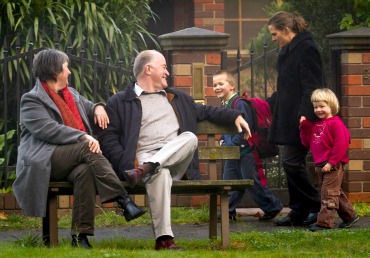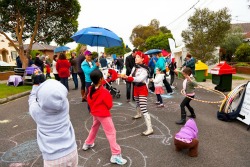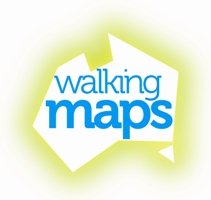Community programs
Motivators and obstacles to walking

It is important to support people to make the decision to walk. Considering the motivators and deterrents to walking is an important part of the planning process. Barriers and enablers to walking are deeply explored in Pedestrian's Quality Needs. Motivators for walking were also explored in a survey of 400 people in Perth in 2008. 'The shops' was identified as the most important destination, while 'general exercise/ to improve health' was the most common motivator (Walking Attitudes and Behaviours Among Respondents in Perth Metro Area 2009).
Unpublished market research from Melbourne and Geelong suggests:
- Perception of time is the most important influence on an individual's propensity to walk. There is opportunity to promote walking as stress relieving 'me time.'
- Concern regarding safety, namely the perceived threat of attack, is a key deterrent for walking at night.
- Weather is important for determining propensity to walk, especially for recreation. Daylight savings is therefore a good time to encourage walking.
- Avoiding the stress of driving in traffic can be a good motivator for walking.
The National Institute for Health and Clinical Excellence reports:
- Commitment to a walking partner or pet can be a good strategy for overcoming individual lack of motivation to walk for exercise. Having a community connection (meeting and seeing people on the street) can be also be a motivator.
- Health information targeted at individuals (including printed media, telephone support and text messages) have shown effectiveness in increasing individual levels of walking for leisure or travel.
- Pedometers have demonstrated some cost effectiveness for increasing walking among individuals. Pedometers should be used in conjunction with realistic goal-setting, monitoring and feedback.
Resources and programs
- Walking groups - commitment to a partner or group is a motivator for individuals to walk, and walking groups can build social connections. Our walking group information explains how to find, or start, a walking group. The Heart Foundation Walking program is a network of free community based walking groups led by volunteer Walk Organisers. The program assists local councils in setting up and maintaining walking groups across various settings.
- Walkability Action Groups - Victoria Walks provides support and resources to groups that want to improve community engagement and walking in their neighbourhood. Victoria Walks encourages Walkability Action Groups (WAGs) to have a more constructive and structured interaction with their councils than is often the case with some community members. See our case studies for WAGs in action.
- Playing out - temporary closures of road space to vehicle traffic allow the community to reclaim the pavement as space for people. Playing out is a great UK based site that helps community members to plan road closures to traffic and create a play space (the inspiring video is recommended viewing).
- Play Streets - in New York, the City Council has formalised the concept of closing streets to traffic for the purpose of creating a play space, into a regular event. This is part of a broader movement in North America led by Open Streets. The concept has been trialled here in Australia through the Better Block movement. Events have been held in Geelong and Coburg, Victoria and also in Sydney.
- In the US, the In Motion program has had success in encouraging people to switch from solo car driving to other modes, including walking.
Information and signage
- Walking Maps - Victoria Walks Walking Maps website is an excellent way for councils to promote recreational or tourist walks within their community. We have developed a range of easy options to support councils to publicise the opportunities in their parks and streets through Walking Maps. A number of councils and government agencies have already taken the opportunity to promote walks on Walking Maps - see for example Horsham's Public Art and Heritage Trail or the Plenty Gorge Walk.
- You are here: a guide to developing pedestrian wayfinding - wayfinding signage helps people to navigate themselves within an urban environment, allowing them to walk with confidence in where they are going. This resource provides a Victorian-specific guide for developing such signage.
- Point-of-decision prompts - point-of-decision prompts encourage walking over an alternative (e.g. elevators). This Singaporean example used point-of-decision prompts in railway stations to increase stair use by 49%.
- MapMyTown - a model for creating maps which delineate the travel time by walking or cycling from key locations such as town centres. By highlighting how far people can travel in either 10 or 20 minutes, it illustrates the potential to comfortably walk or cycle to everyday locations.
- Sharing Yarra's roads and footpaths - a brochure created by Yarra City Council, to educate the community on road rules. This was used as a wrap-around for distribution with the Council's regular newsletter, and is a good demonstration of how councils can use their existing communication channels to encourage behaviour change.
Case studies
- Case study - Way finding signage, Cities of Greater Bendigo and Port Phillip
- Case study - Walking information, City of Greater Bendigo
- Case study - Walking tours and information, City of Melbourne
- Case study - Greater Shepparton on the Moove
- Case study - Walking programs and information, City of Stonnington

